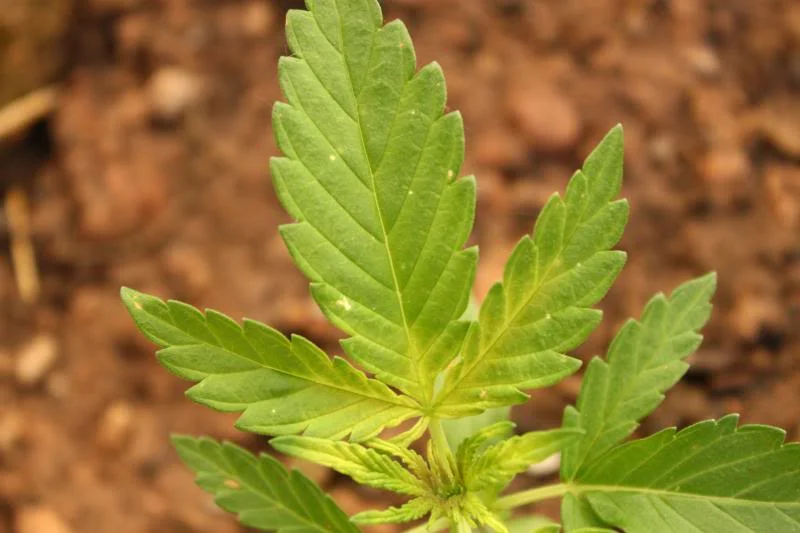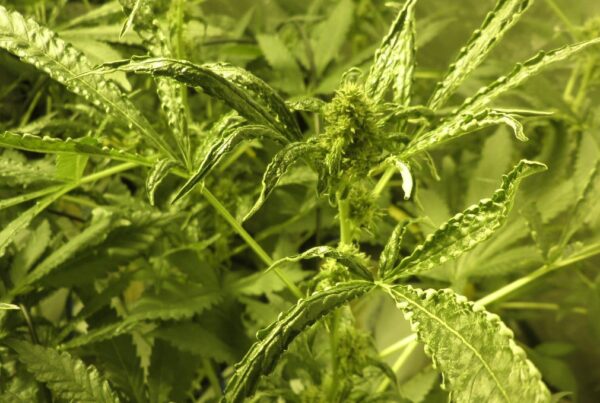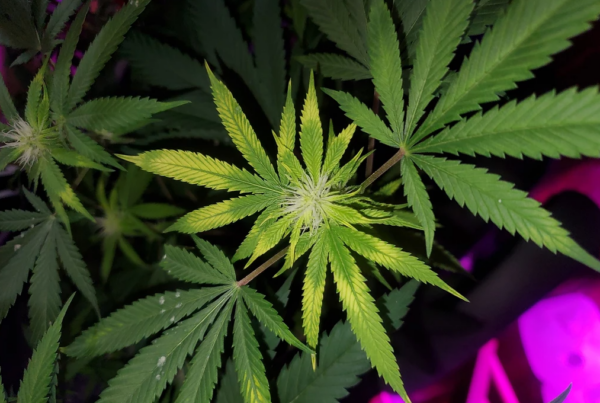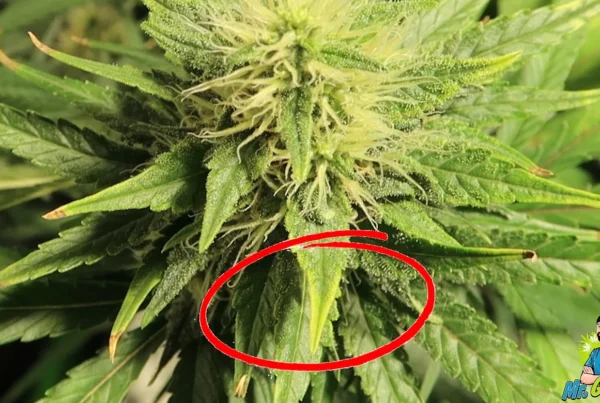Many potential problems can occur when growing cannabis. There are a handful of problems that have very definite symptoms, but since these symptoms can be the result of multiple issues, it is difficult to tell the correct source of that problem. This can make it a bit challenging for an accurate diagnosis. Iron deficiency in cannabis plants is one of those problems. But fortunately, it is easy to fix once diagnosed. This article will not only help you correctly identify if your plant is deficient in iron but will also provide you with treatment methods that are guaranteed to work.
Role of Iron in Cannabis Plants
Iron is a micronutrient that is needed for many vital plant functions like respiration and photosynthesis. It is also essential for chlorophyll formation which gives plants their green color. Since iron plays a role in critical plant functions, a deficiency of iron can affect the overall health of the plant.
Symptoms of Iron Deficiency in Cannabis Plants
Iron deficiency is very easy to mix up with other nutrient deficiencies. The primary reason is that the main symptom of this issue is chlorosis, which is yellowing of leaves. Since iron is required for the formation of chlorophyll, when the plant is deficient, the leaves start yellowing. But in this case, the newer leaves start yellowing first, unlike nitrogen deficiency where older leaves start yellowing first. Therefore, look for symptoms at the top of the canopy.
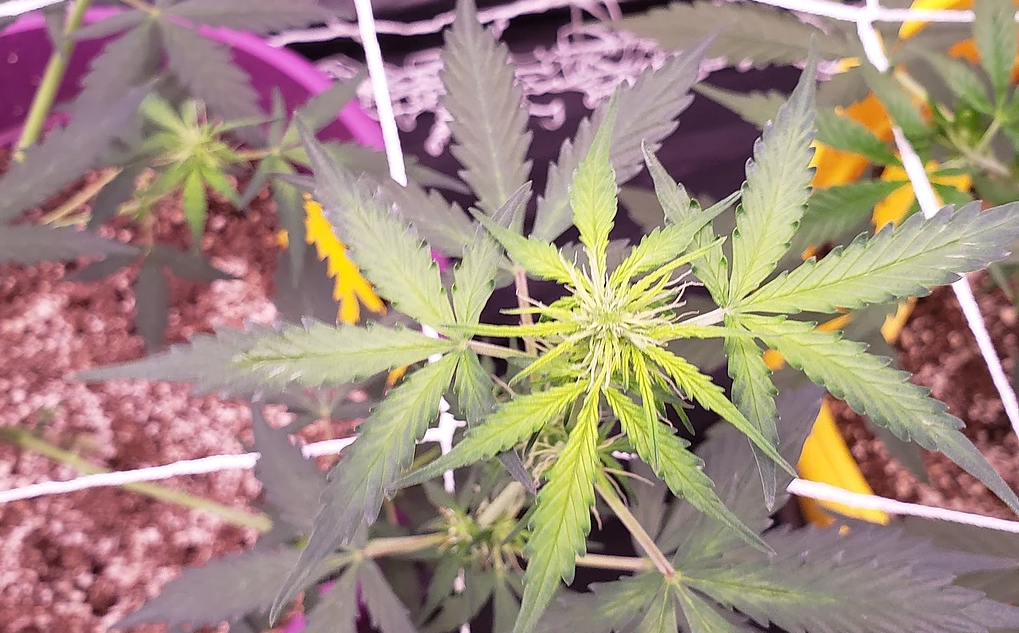
Another strong indicator of iron deficiency is that the chlorosis is reversible – unlike many other deficiencies. So if you notice that leaves are turning green again, your plant very well may have encountered iron deficiency. Another sign is that the chlorosis begins at the base of the leaf and the tips of the leaves may remain green. So the yellowing starts at the base and then progresses from the base towards the tips. Here is a checklist of symptoms that you should look for:
- Yellowing of newer leaves or fresh growth
- Chlorosis progressing from the base of the leaves to the tips
- Intense yellow or almost white leaves
- Reversible chlorosis or leaves turning green again
- Stunted growth
Causes of Iron Deficiency in Cannabis Plants
Iron deficiency is rare when growing in soil and this deficiency in cannabis is usually caused by an iron lock-out, which is when the plant is unable to absorb iron from the soil. This happens when the pH of the soil or growing medium is inadequate for the absorption of iron. For instance, using chicken manure as a fertilizer raises the pH of the soil and causes iron lockout. It also raises the availability of other nutrients and that can become a hindrance in iron absorption as well. A high level of phosphorus and some other nutrients can cause cannabis plants to become deficient in iron.
Another cause of iron deficiency is stress. Fluctuating temperature, too much time in darkness, and pruning the plant excessively can cause stress and ultimately iron deficiency. The temperature in the grow room being too low and fluctuating often impacts the root system and weakens it which can also cause this problem. Lastly, bad drainage and overwatering of the plant can also affect the iron level in cannabis plants.
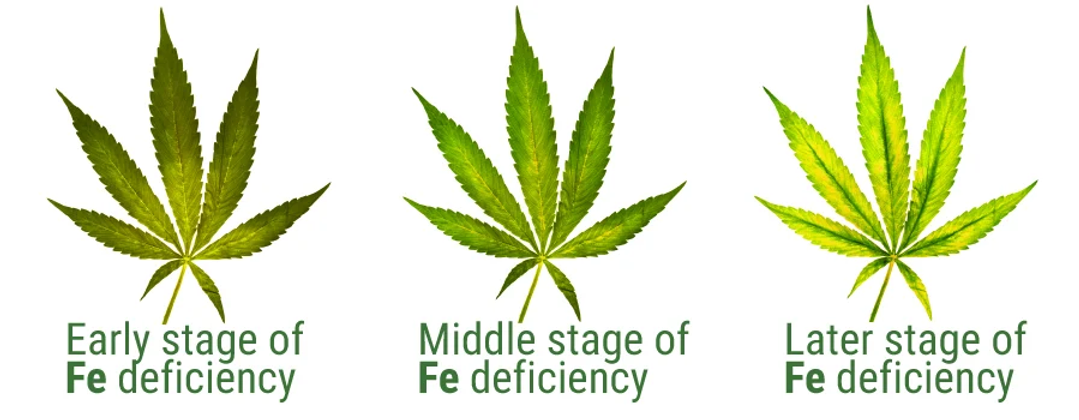
Iron Deficiency Treatment
Now that you know the cause and signs of iron deficiency in cannabis plants, you are ready to treat it. You can fix the problem by:
- Restoring pH levels
- Making conditions ideal in the grow room to eliminate causes of stress
- Adding iron if needed
The first step is to ensure that the pH level is optimal for iron absorption:
- Iron is absorbed best in soil between a pH of 6.0 to 6.5
- Iron is best absorbed in coco or hydro between a pH of 5.5 to 6.5
To restore the pH level, flush the root system with pH-balanced water. This will help eradicate excessive salts and lower the pH. This will also help if there is an excess of phosphorus that is causing the deficiency. The next step is to ensure that the conditions in your grow room are ideal for the development of your plant – which means the temperature is not cold and the plants are on the proper light cycle. Do not prune your plant excessively and avoid temperature fluctuations in the grow room.
Since bad drainage and overwatering can also cause this issue, take steps to add holes in the grow pot for proper drainage. This will also help avoid overwatering. If you started with a compact soil or soil that contains a lot of clay that retains or holds water, try switching to a potting mix.
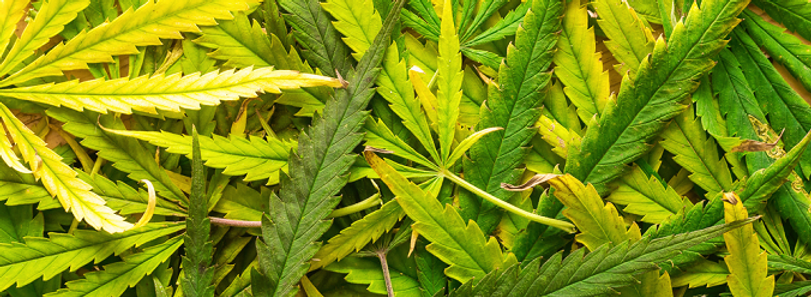
There is usually plenty of iron present in the soil for cannabis plants, but if you use RO (Reverse Osmosis) or soft water, it can potentially lead to iron being removed and causing a deficiency in the plant. This means that you need to add iron to the system. If you suspect that supplementing iron is required, start by using a Cal-Mag supplement that contains iron. any calcium and magnesium supplements contain iron and help fix iron deficiency in cannabis plants. It is suitable for all growing mediums including soil, coco coir, and hydroponic systems. You can also purchase a soft fertilizer that contains iron to tackle this problem.
Thankfully, the chlorosis that results from iron deficiency is reversible. Some growers use iron chelates and spray it on the leaves to help them turn green again. You can also use this remedy but do not forget to fix the problem first by restoring the pH and making your environment’s conditions optimal for plant growth.
After taking these steps, your plant will start recovering. It will show clear signs of recovery within a week – often times within a few days. It is important to stay consistent and monitor your plant properly. Leaves with severe damage or yellowing may not recover but most of the leaves will become green again over time. Once the deficiency is fixed, the new growth won’t show symptoms anymore. To prevent the problem from happening again, monitor the pH, invest in cannabis-friendly nutrients, and focus on creating an optimal environment for your plants.
![]()

